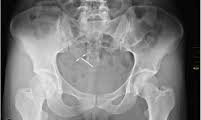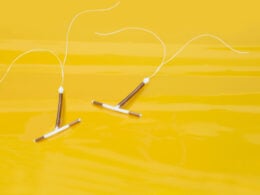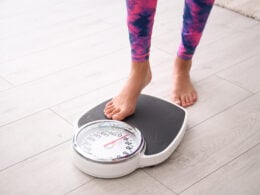Me: “I’m never letting Erika get an IUD.”
My wife: “I’ve got a news flash for you. She’s 21 and doesn’t have to ask your permission.”
Me: “Not if can do anything about it…”
My wife is right, I don’t have the final say, but retain huge influence over my daughter because I love her and she knows it. She also knows that sex before marriage is harmful for her physical and emotional health anyway (that’s another story that I want to get to sometime). But if she, once married, thought about using an IUD, an intrauterine device, I have a few arguments against it that I want to share.
What’s making it harder for all of us parents is that the American Academy of Pediatrics is urging teen girls to get IUDs or implants in a report they published last week. The Guttmacher Institute, a close ally to Planned Parenthood, chimes in. According to Heather Boonstra, Guttmacher’s Director of Public Policy: “Because IUDs and implants don’t rely on any action from the user, they’re a particularly good fit for teens. It’s sort of a set-and-forget method.”
These teen girls may not forget about their IUDs so easily after they go through the experience of having one.
My first source of data couldn’t be more pro-IUD. It comes from an article[i] published online and called “Management of problems related to intrauterine contraception.” Two of the four authors/editors are legal consultants for Bayer, the leading manufacturer of IUDs, so we can safely assume it won’t be overblown anti-IUD propaganda.
The report mentions interesting facts about these devices:
- 10 percent of IUDs are malpositioned. It means they’re put in wrong. Symptoms of a displaced IUD, such as new or especially bothersome cramping, heavy menstrual bleeding, or bleeding or spotting between periods. Furthermore, a “malpositioned, specifically cervically located, copper IUDs may pose an increased risk of pregnancy,” according to another article.[ii]
- In the first year of use, expulsion occurs in up to 10 percent of women with the copper IUD and up to 6 percent of women with the hormonal IUD. What’s more important for our point today, is that among girls aged 14 to 19, the rate of IUD expulsion is 18.8%[iii]. Almost 1 in 5! Side-effects of an expulsion include cramping, vaginal discharge, inter-menstrual or post-coital bleeding or spotting. Sometime there are no signs of the expulsion, which means the user is not aware that her contraceptive method is not effective.
- “Among women who conceive with an IUD in situ [in place], the miscarriage rate is approximately 50 percent,” says the report. Conceiving with an IUD in place and not miscarrying also leads to a whole other set of challenges, as you can imagine.
- Other frequent issues mentioned in the report include amenorrhea (loss of periods), frequent spotting, and pelvic inflammatory disease (PID). Women who have an STD, are especially at risk of PID.
- In 1 in 1,000 cases, the IUD will actually end up perforating the uterus. While relatively rare, these cases can lead to perforation of the bladder or the rectum. We’re now talking about a major issue that will require invasive surgery, and can have serious complications. Two years ago, a friend of mine was interning at a large San Antonio hospital in the ob-gyn department. In the space of one month, he assisted the surgeon with two different operations for IUD displacements. The first woman’s IUD was found and removed. The second one wasn’t. It was so deeply embedded in the uterine lining that it couldn’t be removed. Oops. Too bad, ma’am, you’ll have to live with that foreign object in your body the rest of your life, and with the consequences (pain, putting a pregnancy at risk, etc..).
My second source of information is a Facebook page dedicated to women who have experienced problems with the Mirena® IUD, a registered trademark of Bayer. The page has over 60,900 fans! The stories you can read on it are quite edifying. Here are some quotes from these women who have experienced the device:
- “I have had my mirena iud for a little over a year now. I just recently started having a lot of discharge, spotting, slight cramping, and I look like I have gained a ton of weight. My stomach is so bloated. This has just recently started happening and has been going on for 4 weeks now. Any ideas on what could be going on with my body? “
- “I have been suffering from near constant back pain even when I’m not doing anything (I cannot even wear my son in a correct carry for more than 10 minutes which breaks my heart) very bad anxiety and a feeling that my mind is constantly racing and I cannot focus on ANYTHING (which freaked me out to the point of panic attacks) I have rapidly been losing weight and am 5-10 lbs smaller than before I got pregnant (not a good look for me, I might add) and I have had trouble controlling my anger and stress. My doctor refused to take it out saying I was just adjusting to the hormones…”
- “How many times have you miscarried while on the mirena? I myself have as of today miscarried 5x. I don’t want a baby right now but I thought it was supposed to keep me from getting pregnant all together. I have had it checked recently and it’s in place right. Y am I still getting pregnant?”
You can also read the story of Jennifer Martin[iv] who not only got pregnant on her IUD and had a miscarriage, but then the doctors realized that her IUD had moved to her abdomen and she ended up with a total removal of her reproductive system. Many other stories like hers can be found on the website called The truth about IUD.
Folks, that’s the reality of IUDs. Tell your daughters.
References
[i] Management of problems related to intrauterine contraception, Up-to-date, Authors Gillian Dean, MD, MPH
Alisa B Goldberg, MD, MPH; Section Editor: Mimi Zieman, MD; Deputy Editor: Kristen Eckler, MD
[ii] Malpositioned IUDs: When you should intervene (and when you should not); OBG Management, August 2012 • Vol. 24, No. 8; Kari P. Braaten, MD, MPH; Alisa B. Goldberg, MD, MPH. http://www.obgmanagement.com/home/article/malpositioned-iuds-when-you-should-intervene-and-when-you-should-not/6d096bf89ea063db7f404c77f2bd0ddd.html
[iii] Association of age and parity with intrauterine device expulsion, Madden T, McNicholas C, Zhao Q, Secura GM, Eisenberg DL, Peipert JF, Obstet Gynecol. 2014 Oct;124(4):718-26. http://www.uptodate.com/contents/management-of-problems-related-to-intrauterine-contraception/abstract/11
[iv] http://4boysforme.blogspot.com/











